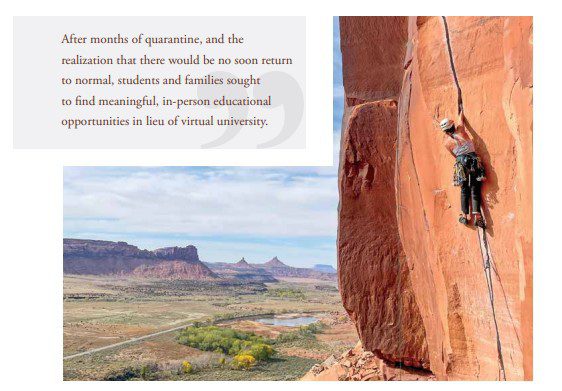How A Pandemic Pivot is Changing The Gap Year
- Posted by Yanitsa Rodriguez
- Categories Articles, Gap
- Date April 25, 2022
By Claire Sutton, Assistant Director, HMI Gap
The size of HMI’s Gap Program has more than doubled since the beginning of the pandemic. It did not always feel like this would be the case. In May 2020, the HMI Gap admissions lines had been all but silent for two months. This led us to reevaluate our growth goals and scale back to two (instead of three) cohorts. At the same time, we scrutinized our practices to prioritize in-person experiences, and we scrambled to develop five weeks of domestic programming as international travel was not possible. Then, in late June, as colleges and universities started to announce their plans for hybrid and fully remote learning for the 2020-21 school year, the phone began ringing–and it did not stop. In July alone we saw a 155% increase in applications. By August, we apologetically shut down our application portal. We simply could not keep up.

The folks who reached out were not typical of the students we have served in the past. They never expected to take a gap year. For many, this marked the first time they had explored the entire ecosystem of thoughtful, structured, and educational gap semester opportunities. They did not step off the academic treadmill, as we encourage in our promotional materials; the pandemic knocked them off.
After months of quarantine, and the realization that
there would be no soon return to normal, students and
families sought to find meaningful, in-person educational
opportunities in lieu of virtual university. After the success
of our 2020 summer programming, we were in a strong
position to recruit students for fall semesters. We finalized
our entirely domestic itineraries and increased our
programming capacity by 71%. In the end, HMI Gap served
60 students last year compared to 35 in 2019-2020.
This demand—and our strides to meet it—spurred exciting changes that are now part of our new normal. We now offer an entirely domestic course in the fall and a similar version in the spring. As HMI grows our catalog of offerings, we are striving to remain true to Gap’s core values: uniting outdoor adventure, environmental studies, and leadership development in the world’s most awe-inspiring places How does all this play out on our expeditions? I instructed a five-week section of our newly created Traverse semester, a hybrid course of backpacking and rock climbing we created in late July 2020, and into which we immediately accepted 12 students off our waitlist. Almost all these students were taking a very last-minute, unexpected gap year. How would they fare?

The answer is brilliantly. Our students were curious, engaged, and fun—and wildly grateful for the opportunity to be silly, playful, and here, in person. The fall 2020 student cohort is undoubtedly one of the most special communities of which I have been a part in my 10 years of outdoor education. It unequivocally proved to me what we have long thought to be true: that the true merit of gap time is in the opportunity it presents young adults to create a thriving, healthy community where they can live out the fullest version of themselves.
Though many of the students we have served in the past
two years did not have a gap year in their original plan, you
would be hard-pressed to find one that regrets it. Now, more
than ever, students need the opportunity to focus on who
they are outside their families, and outside the classroom,
to intentionally transition into adulthood. My little silver
lining from these dreary two years is that we got to help
more young people do just that.d


 Gap: Studying Glaciers in the Icefields
Gap: Studying Glaciers in the Icefields
 Head of School Search Update
Head of School Search Update